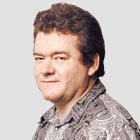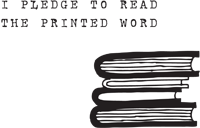 This is a belated response to Derek Fincham's interesting points raised in
This is a belated response to Derek Fincham's interesting points raised in A lot of comments have been made and several hasty conclusions drawn in the last two weeks all over the net.
There are a rather diverse set of arguments involved in this matter and I would like to tackle the different aspects of this recent Leonardo news by unraveling the different thought lines that have all been mashed up together.
There are several overlapping issues here:
- the use of forensic techniques in art history
- the place of scientific research in art historical research
- the interpretation of scientific results
- the benefits of using scientific research to unmask fakes
- the distinction between the art market and fundamental art history
- the conclusions we may draw from this New Leonardo case study
- and finally a critique of Jonathan Jones' piece in the Guardian.
Forensic art research is still only a small part of the bigger picture.
Traditional scientific research (involving the use of chemical analysis, different waves of the EM spectrum,...) has helped to right some wrongs in high profile forgeries, dispel 19th century art history myths, shed new light on old subjects etc.
It has also become standard practice to use certain techniques when writing condition reports (e.g. when art works are being moved).
As in general history, art history is constantly re-written as we approach subjects from different angles. When our gaze and society change over the decades a new light is shed on the past (e.g. gender themed approach). Even progress in science is welcomed to help our research. Why wouldn't we take advantage of 'new' methods? If more accurate and different ways of physically examining an object are at our disposal, let's use them.
However, there is a limit to the benefits forensic art research may seem to have at first due to:
1) lack of funding,
2) the conclusions that may be drawn from this and
3) the money/knowledge pay off: does it really help to have such an extensive examination when it may not even contribute to the whole research at all?
 Luckily we are very fortunate to live in an era where we can use scientific technologies to unmask fraudulent pieces (and have been using for over seventy years).
Luckily we are very fortunate to live in an era where we can use scientific technologies to unmask fraudulent pieces (and have been using for over seventy years). Opportunists have existed as long as man has been producing art, there is nothing recent about this either.
Although interdisciplinary research is stimulated, the concern for the lack of skepticism involving this science is very real and the overly amount of trust the 'new' generation of art historians put in the hard core science without nuancing the results or understanding the implications is not to be taken for granted.
If works like, what has, already been dubbed 'The New da Vinci' on the basis of hazy press releases, are authenticated by whomever and makes it to auction on the feeble argument of a 'highly comparable' fingerprint, then that is just very sloppy research and will, not for a second, be taken seriously within academic circles. If it does not stand up to peer review than it simply hasn't happened.
It still frowns upon web based & media-trumpeted revelations. Unless it passes unscathed through the peer reviewed mill, it will not hold.
In any case, this has already been touched upon briefly in several lectures this and last week by some professors of mine and they are highly skeptical due to the lack of information about this work at this stage.
[This reminds me of the cold fusion antics of Messrs. Pons & Fleischmann and their 'ritualized excommunication' from the scientific world. To illustrate my point let's read a piece
 "The Cold Fusion story seemed to stand science on its head, not only because it was played out in the popular press without the ritual of peer-review, but also because both sides of the debate violated what are generally supposed to be the central canons of scientific logic. Science in the 20th century has been much influenced by the ideas of the Austrian philosopher, Karl Popper. Popper argues that a scientific idea can never be proven true, because no matter how many observations seem to agree with it, it may still be wrong. On the other hand, a single contrary experiment can prove a theory forever false. Therefore, science advances only by demonstrating that theories are false, so that they must be replaced by better ones. The proponents of Cold Fusion took exactly the opposite view: many experiments, including their own, failed to yield the expected results. These were irrelevant, they argued, incompetently done, or lacking some crucial (perhaps unknown) ingredient needed to make the thing work. Instead, all positive results, the appearance of excess heat, or a few neutrons, proved the phenomenon was real. This anti-Popperian flavor of Cold Fusion played no small role in its downfall, since seasoned experimentalists like Lewis and Barnes refused to believe what they couldn't reproduce in their own laboratories. To them, negative results still mattered."]
"The Cold Fusion story seemed to stand science on its head, not only because it was played out in the popular press without the ritual of peer-review, but also because both sides of the debate violated what are generally supposed to be the central canons of scientific logic. Science in the 20th century has been much influenced by the ideas of the Austrian philosopher, Karl Popper. Popper argues that a scientific idea can never be proven true, because no matter how many observations seem to agree with it, it may still be wrong. On the other hand, a single contrary experiment can prove a theory forever false. Therefore, science advances only by demonstrating that theories are false, so that they must be replaced by better ones. The proponents of Cold Fusion took exactly the opposite view: many experiments, including their own, failed to yield the expected results. These were irrelevant, they argued, incompetently done, or lacking some crucial (perhaps unknown) ingredient needed to make the thing work. Instead, all positive results, the appearance of excess heat, or a few neutrons, proved the phenomenon was real. This anti-Popperian flavor of Cold Fusion played no small role in its downfall, since seasoned experimentalists like Lewis and Barnes refused to believe what they couldn't reproduce in their own laboratories. To them, negative results still mattered."]For more on this I recommend Cultural boundaries of science: credibility on the line By Thomas F. Gieryn. It has a chapter on science and mass media and also discusses the Pons & Fleishmann case.
So, in light of this (and I can cite plenty more examples off the top of my head) I can hardly believe anyone is still willing to fork out an exuberant amount of money over this 'New da Vinci' claim. But then again, there are a plethora of examples in big auction houses that prove me wrong.
 [Again in a non-art related way I think of the cricket ball that was sold at Christie's three years ago for a whopping £26,400 while the whole authentication was suspicious. They new it was dubious (someone told them it couldn't be the item the seller was claiming it was) but they just chose to ignore facts and included it in their November sale anyway. For more on this check out Christie's and a lot of balls in Private Eye issue nr 1222 on page 27.]
[Again in a non-art related way I think of the cricket ball that was sold at Christie's three years ago for a whopping £26,400 while the whole authentication was suspicious. They new it was dubious (someone told them it couldn't be the item the seller was claiming it was) but they just chose to ignore facts and included it in their November sale anyway. For more on this check out Christie's and a lot of balls in Private Eye issue nr 1222 on page 27.]It is widely accepted by art historians that art history still belongs to the realm of the humanities (as is vigorously pointed out at my university where sound art historical research is one of the key factors in the curriculum) and is not in any way hard core science.
But I do object to dub it a pseudo science. This has a distinct pejorative associative tone to it.
Kooks who willfully peddle bullshit to deceive people in order to make a few bob or two is pseudo science. Pseudo science may disguise itself under a number of labels. For a clear definition of what pseudoscience is and masquerades as see
I do not think art history belongs among the likes of homeopathy, acupuncture, YEC,...
Art history employs the means of science for case studies and applies the scientific method of research, scrutiny, peer review and skepticism. But it does not, and never has, claimed to be science an sich.
Trained art historians are very much aware of the fact art history is part of the humanities. It cannot break away from the anthropological gaze. (I will not delve deeper into this now, it will lead us down the path of philosophy too far). But on par with the exact sciences researchers' reputations are at stake with every new publication and academic credibility is easily damaged. The publish or die credo has not yet died down entirely.
On the same note art history has always been subject to being dubbed a pseudo science. The foundations of where we stand today in art historical research are based on exactly that: connoisseurship and eliteness. Which reminds me of something Mark Roskill wrote thirty odd years ago in his book What is Art History. He writes: 'From being the dilletants hobby, art history has become a highly skilled and professional discipline, but a discipline that needs flair, judgement and aesthetic perception.'
 I feel the need to point out that
I feel the need to point out that Plus he boasts knowing a thing or two about spotting fakes a mile off and has a go at researchers. 'Today's art experts marshal techniques such as infrared photography to make their knowledge seem all the more scientific.'
What does he mean, seem all the more scientific? Researchers do not tart up their research with imaging techniques to seem more scientific. The aim of using technology available is to interperet what we see accordingly. And we can examine pieces of art in a non-intrusive way.
I bet Mr Jones would be one of those people who would physically open up mummy caskets just to see if there's anything inside.
His lamentations are proof of his poor understanding of how historical research is carried out.
According to Morelli in his collected Critical Studies :
"Art connoisseurs say of art historians that they write about what they do not understand; art historians, on their side, disparage the connoisseurs, and only look upon them as the drudges who collect materials for them, but who personally have not the slightest knowledge of the physiology of art."
It seems Mr Jones does not fit either of Morelli's descriptions. So therefore Morelli says he is neither an art connoisseur nor an art historian.
[And before I get any comments: I know I am using the dishonest argument from authority to prove something, but I found it hilarious when reading with Mr Jones in the back of my mind.]
A propos to the 'New da Vinci's new value price: It is not new to this day and age paintings have been re-ascribed to other names in order to fetch a higher price. I think of Murray Pease, one of the world's most famous art detectives (and of course once conservator of the Met in Manhattan) who proved in 1945 that Andrea Mantegna's signature on the Meditation on the Passion had been painted over Vittore Carpaccio's. He used one of the 'earliest' forms of what we now dub 'forensic art research'; infrared film and chemical analysis.
 And the art world surely remembers Van Meegeren and all the pro's who got conned.
And the art world surely remembers Van Meegeren and all the pro's who got conned.I once again recommend Edward Dolnick's The Forger's Spell. It is a light read and clearly demonstrates how the art conaisseurs failed in recognizing all the red flags which we would find straight away in this day and age and how they were chocked by the art world climate.
Actually now I come to think of it, it is uncanny how someone like Martin Kemp could easily fall into this trap the way Abraham Bredius did.
Bluntly put (and I know there are a lot more nuances to be added) only in the cross section of the domains of art history and economy can we see auction prices to be of paramount importance.
If this really were to be a new da Vinci work, it will not topple previous conceptions about the Renaissance artist. Just a handfull of people will be disappointed they did not stumble upon the work earlier. If it turns out to be a 19th century drawing (what it certainly looks like) the price will become irrelevant again and the whole hubub will die down, fade into the background once more and a different handfull of people will be disappointed.
I think the primary mover of the people involved in this will case is the money that can be made on the art market. They are very probably not really interested in the art historical research. Because, believe me, there really is no money to be made from art historical research alone!
Alas, as some case studies of works in the past have proven, not all scientific methods or art historical approaches are conclusive.
For some interesting comments and an introductory read on this I recommend a new publication Scientific Investigation of Copies, Fakes and Forgeries by Paul Craddock.
This has turned into a rather lengthy post and I've not even scratched the surface of this subject.
Perhaps to be continued...



No comments:
Post a Comment